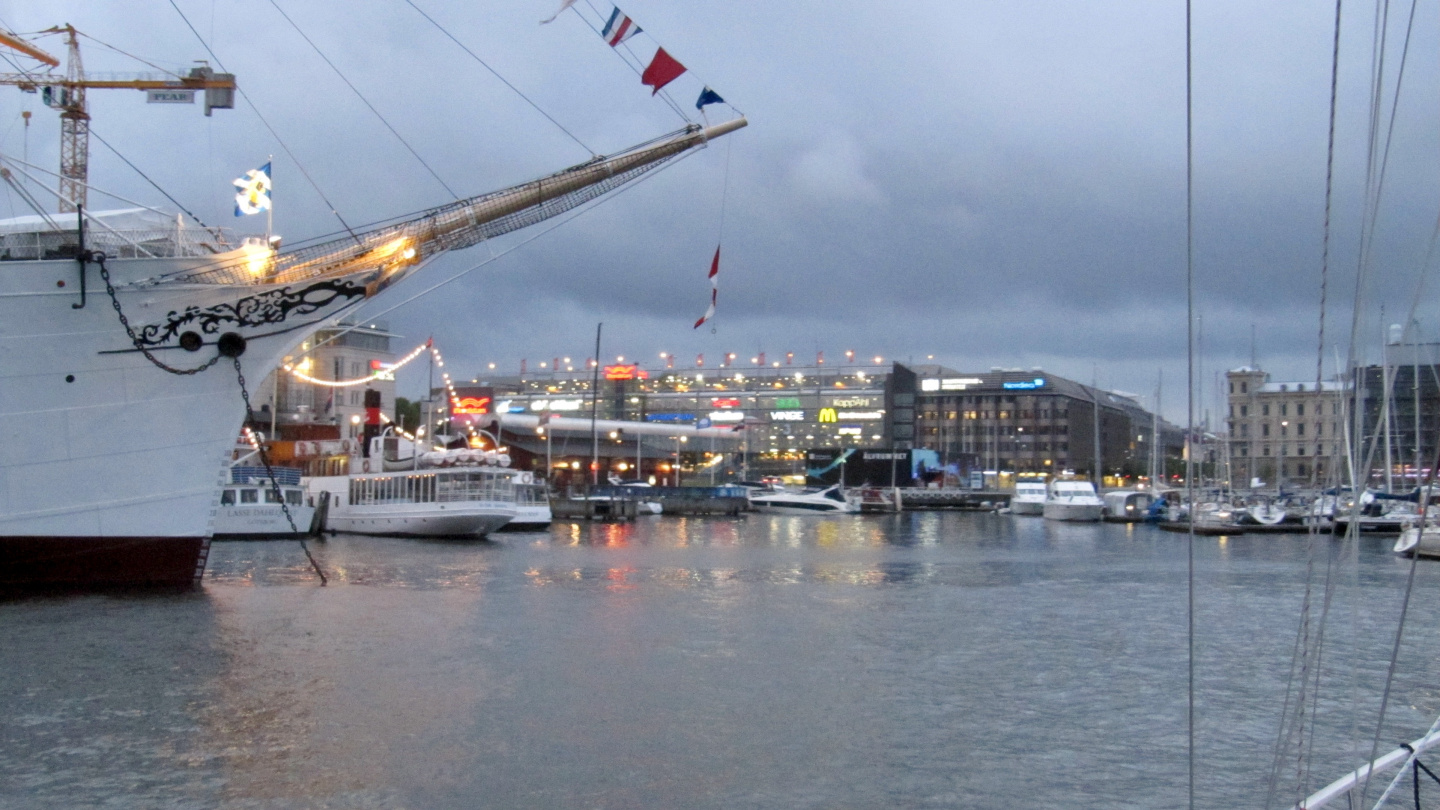At first we thought about visiting the cities of Mariestad and Lidköping and also the castle of Läckö but on the other hand we have been travelling almost every day, so we decided to take a rest and make a longer stop in Gothenburg (Göteborg). Thus the Firday’s leg over lake Vänern was 70 nautical miles from Sjötorp to Vänersborg. Perkins purred quietly as we passed across the Sweden’s biggest lake. There were no wind and the sun was shining. Passing squalls brought some wind but it was directly against us.
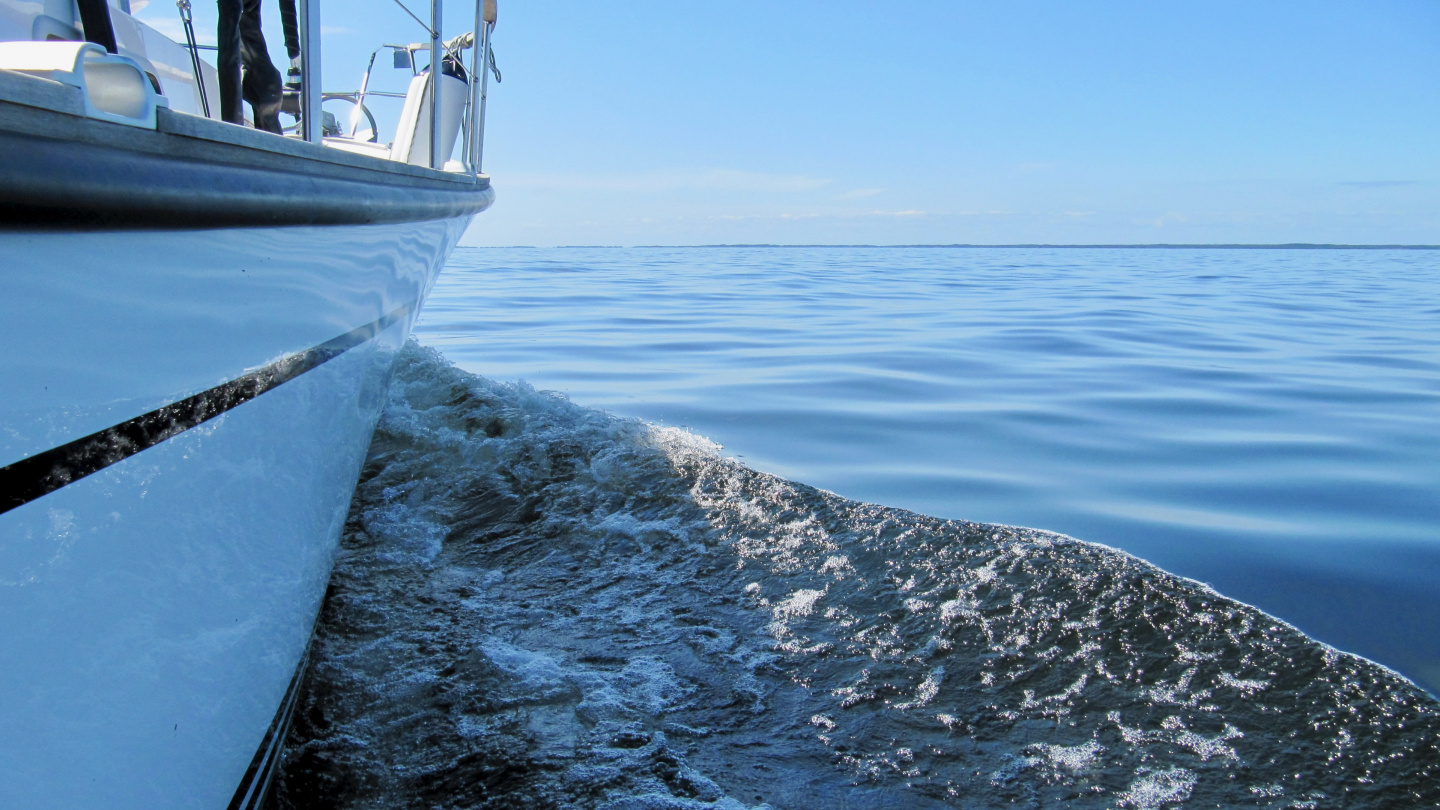
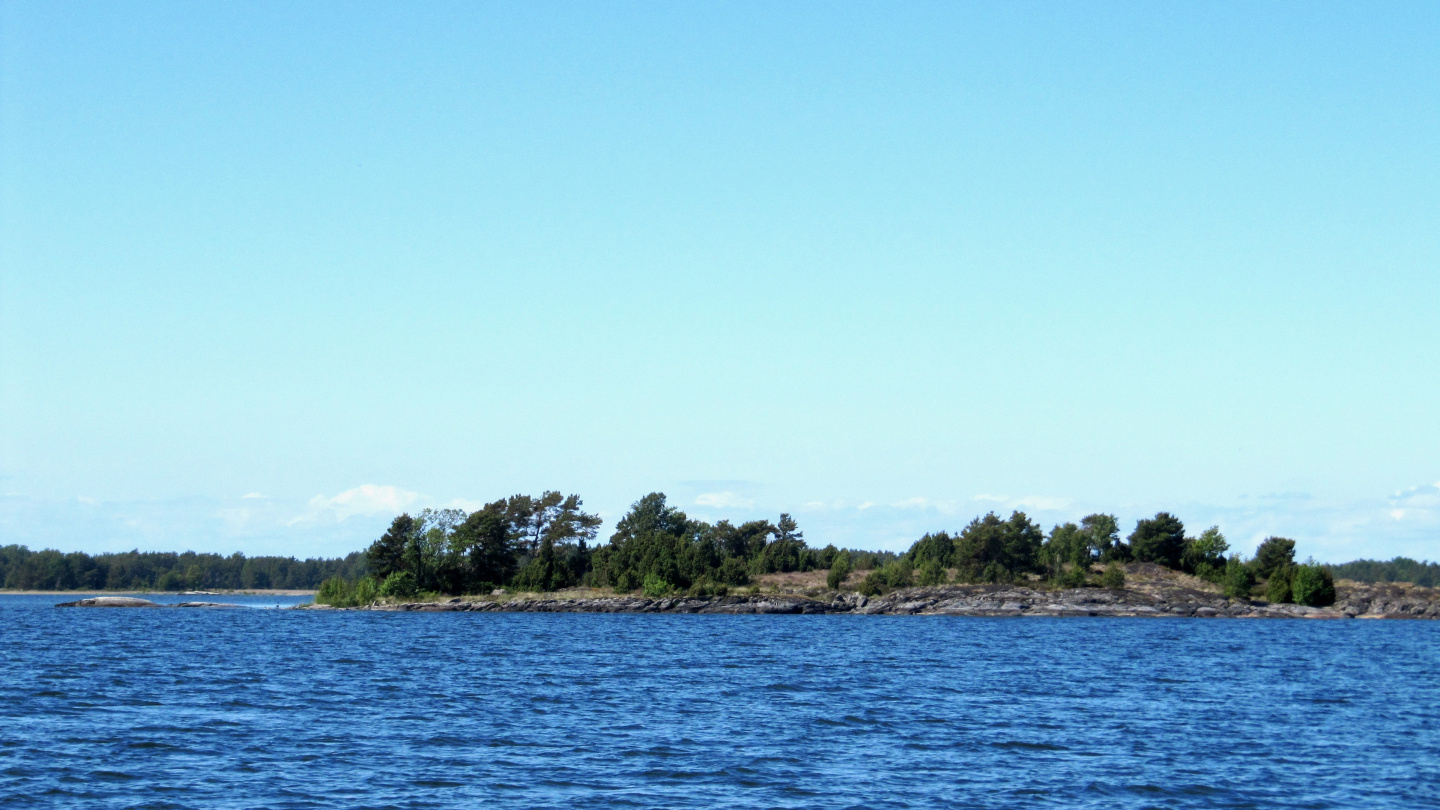
We listened actively the VHF channel 9 while approaching the Tollhätte canal from the north. On this channel both ships and boats talk with lock keepers and bridge guards throughout the canal. On Friday evening all traffic was in Swedish and we tried to understand the notifications made in local dialect. About a mile from the bridge we called them up and asked to open the bridge because of our air draft. Everything went smoothly by using English language. Simultaneously we also asked to open the adjacent railway bridge as well.
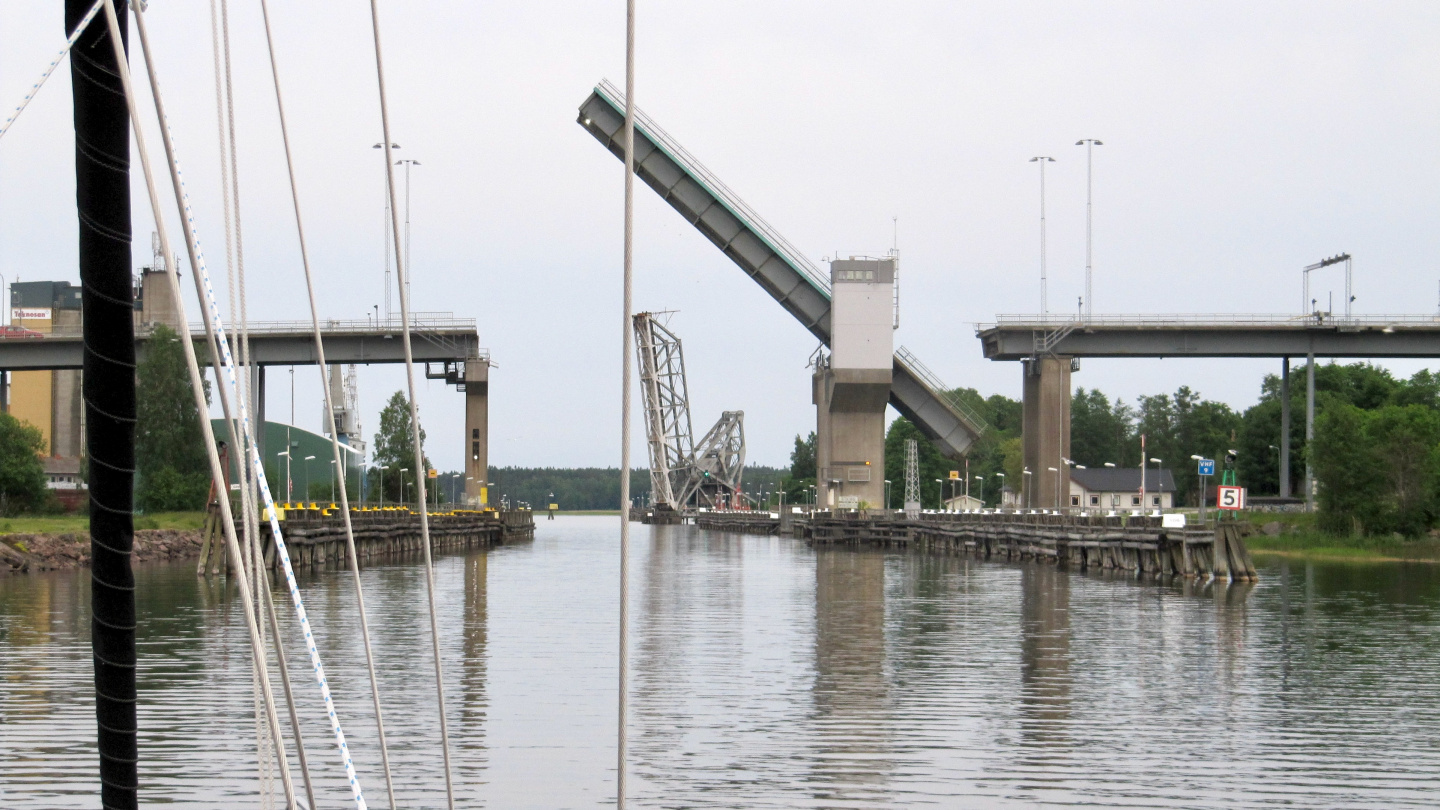
The VHF was anyway very useful in the Trollhätte canal. We used it extensively, all ships and also boats made advance notifications about arrivals to bridges and locks. The traffic went very smoothly.
We arrived late in the evening into the guest harbour of Vänersborg. There were already five other boats moored alongside and we joined them. In the morning we had a brisk wakeup to the all boats in the harbour when two active marineros woke everybody up to pay the harbour fee. We have not seen such a impatient cashiers since Itäsatama harbour in Hanko in Finland.
On Sunday we had ahead one more canal with locks. We were a little worried about the Trollhätte canal’s ship locks. The locks are from six to eight metres tall and lines must be moved two to three times in fixed wall bollards to the lower one. Fortunately the first lock was only six metres so we got hold of the system quickly.
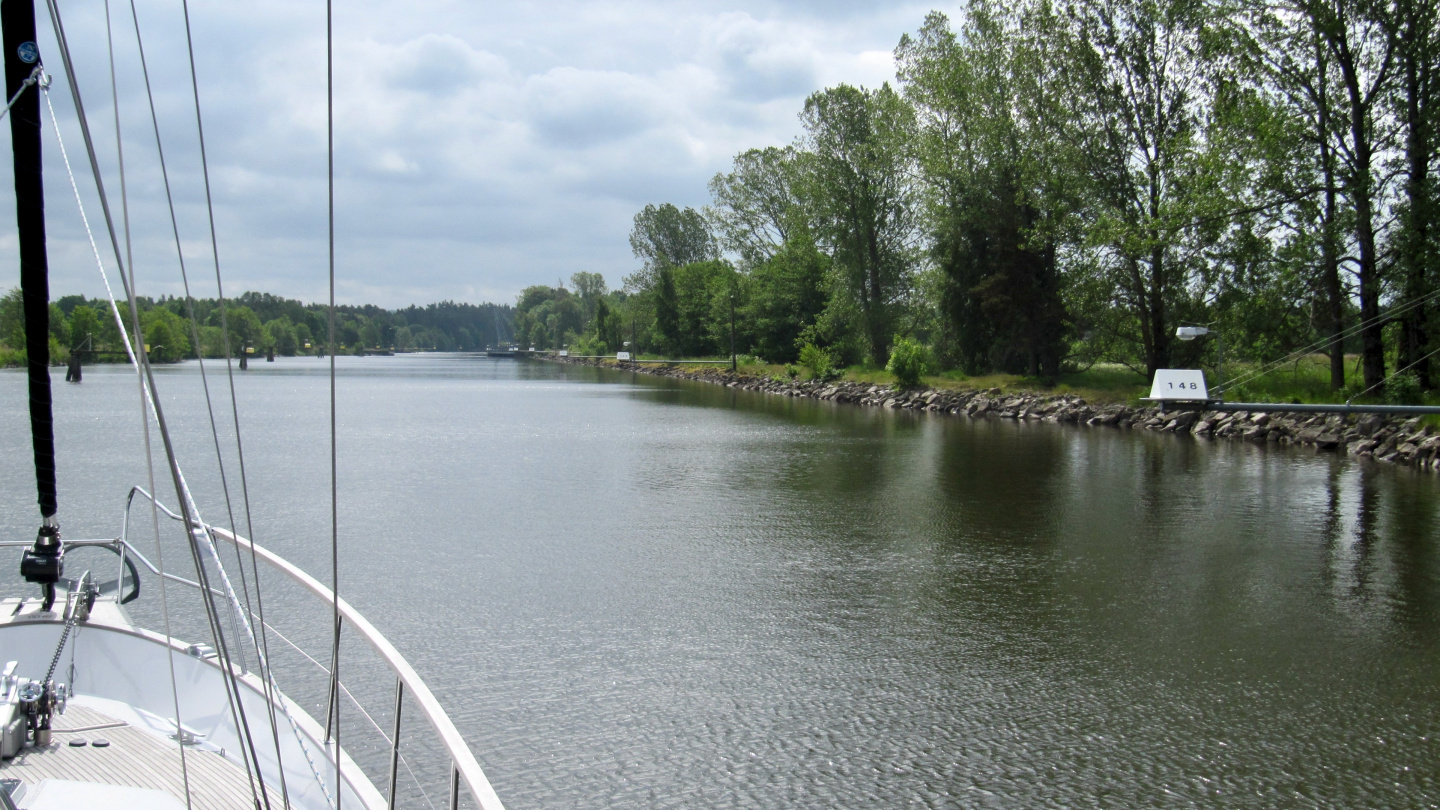
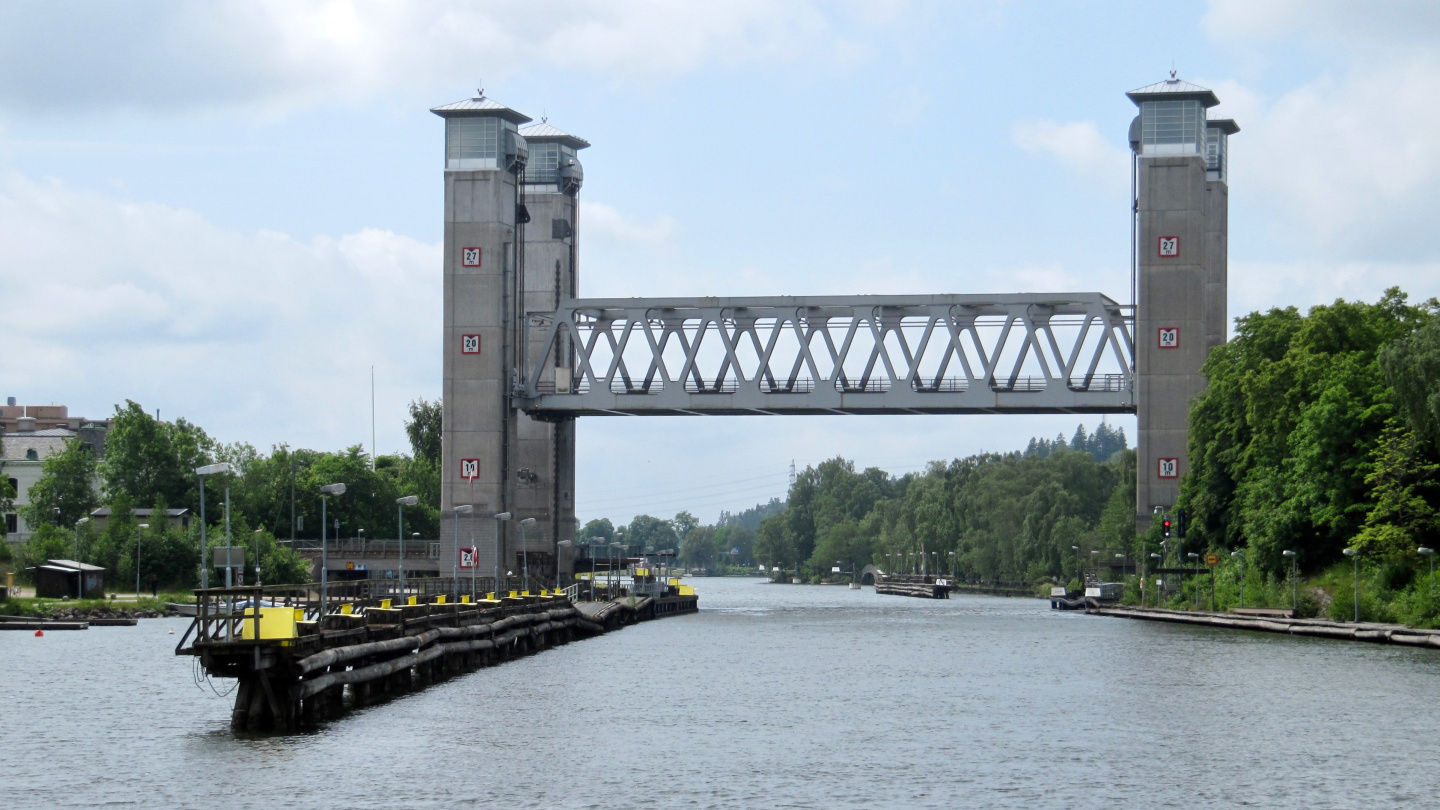
Already beforehand we were thinking that one line in the middle cleat should be enough. We made similar rig in Saimaa canal’s locks with previous Suwena and it worked perfectly again. Andrus drove the boat into the lock and I passed the line over the first bollard in the wall. The water started to descent and a few metres lower was a next bollard and I moved the bitter end of the line to the new bollard. While I held the line tight in lower bollard Andrus pulled the loose rope from the upper bollard. This turned out to be a good way because the surface of some bollards were rather coarse and the line got stuck easily. Most of bollards were smooth and the line slided around the bollard easily.
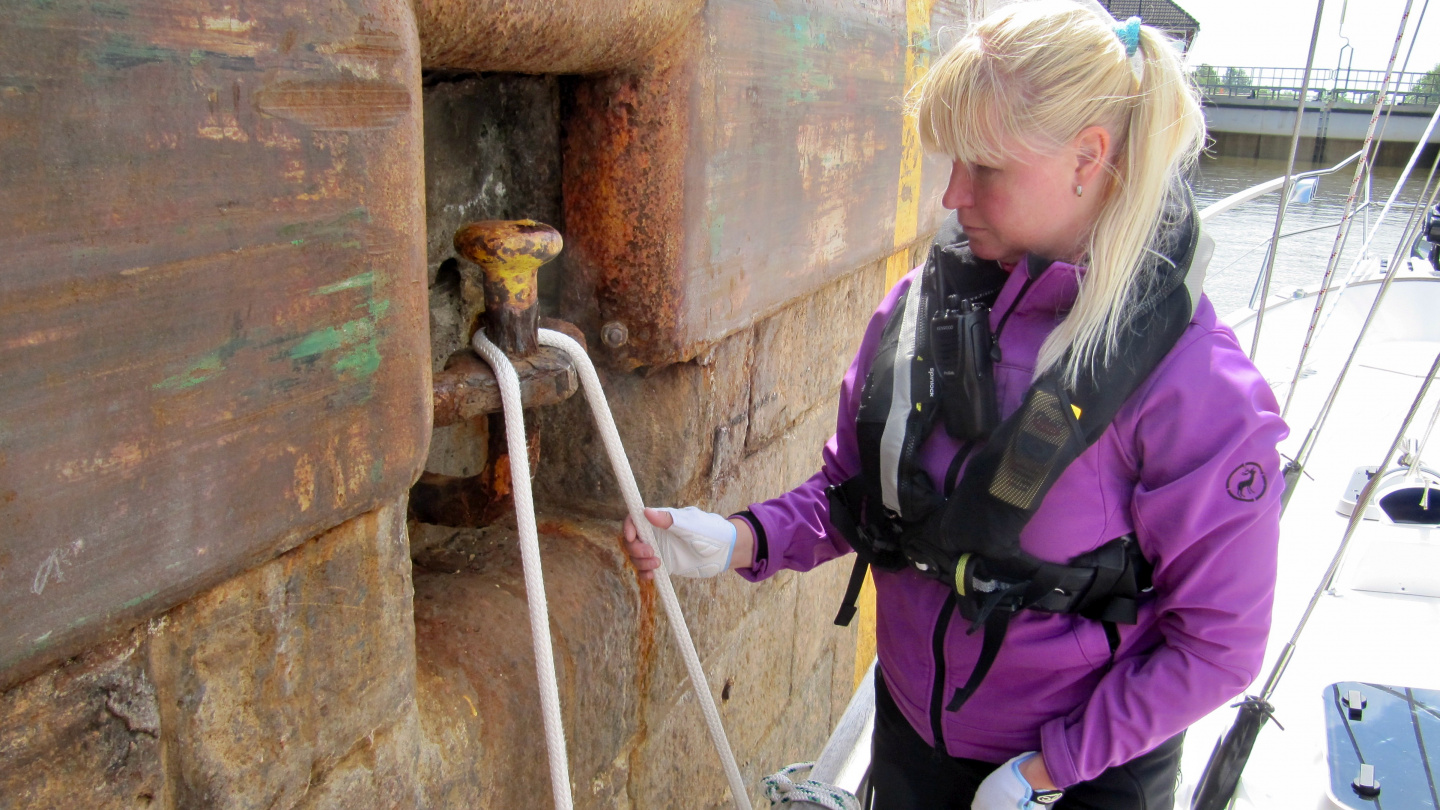
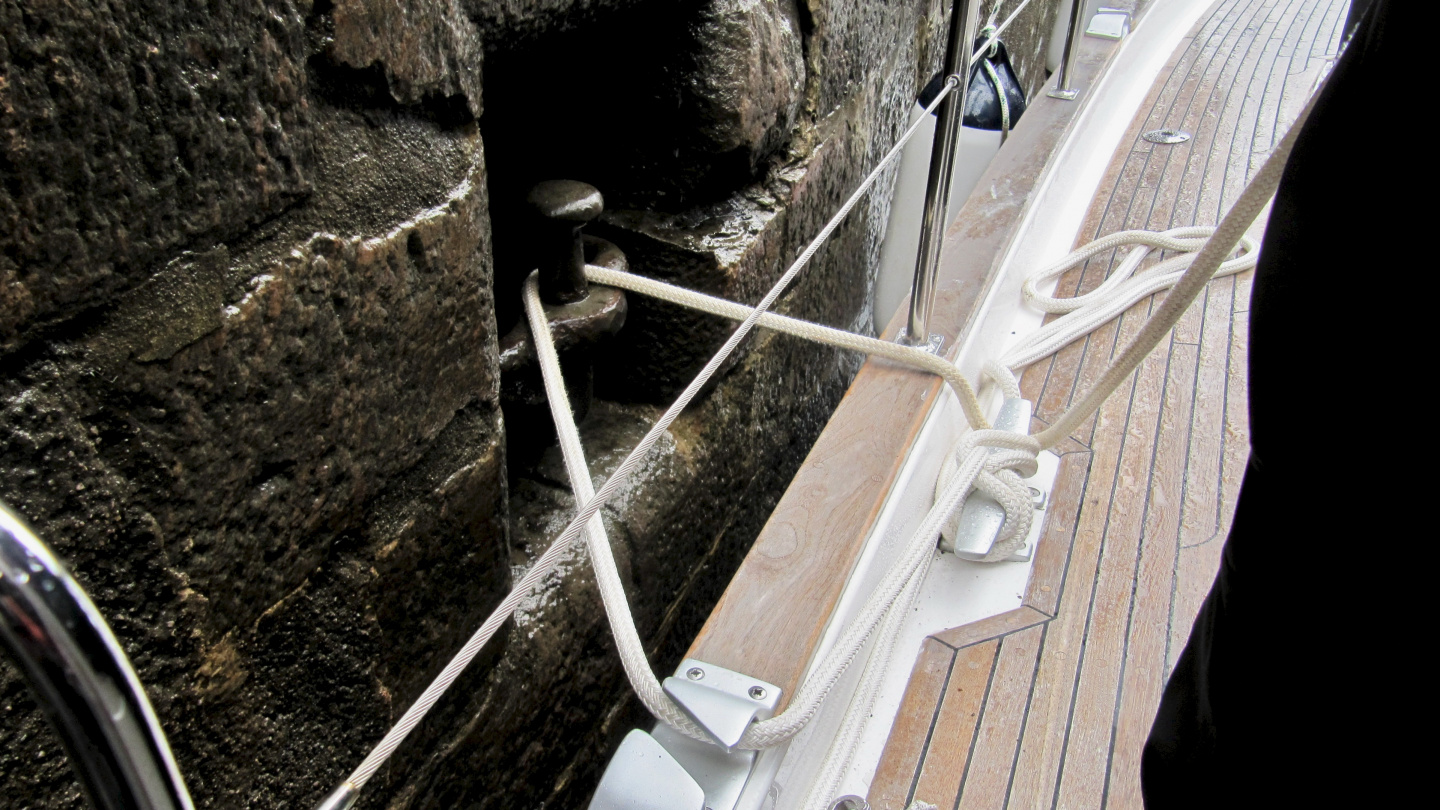
The boats should be tied up in the Trollhätte canal locks to the eastern side if possible. The wall on eastern side is smooth with recessed bollards. The wall on western side is rough rock with concrete pillars made for mounting the bollards. Depending on the length of the boat these pillars either will match with the boat or not 🙂
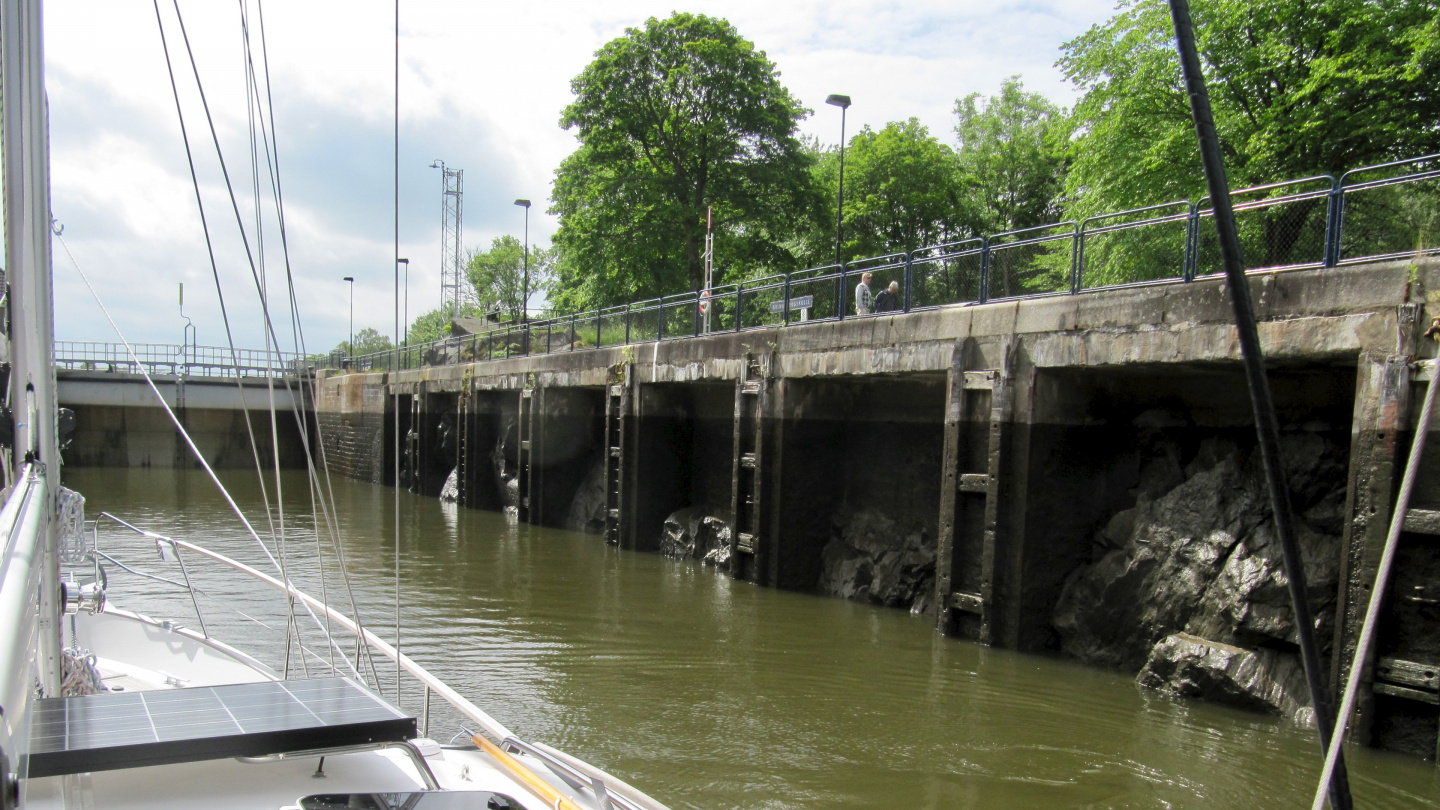
There are first two locks in the Trollhätte canal after which in Trollhättan city comes a flight of three locks and finally in Lilla Edet is still one lock more. We stopped in the upper waiting dock of a second lock from the north because the very small guest harbour of Trollhättan was already full. The Sun came out and warmed up our afternoon walk. In Trollhättan it is possible to explore the original and out of commission locks. The walk was very nice, the old locks are surrounded by a beautiful park. We also enjoyed a delicious skagenröra bread that is a traditional sandwich filled to the brim with shrimps. And again we had energy to continue the lockage towards Gothenburg.
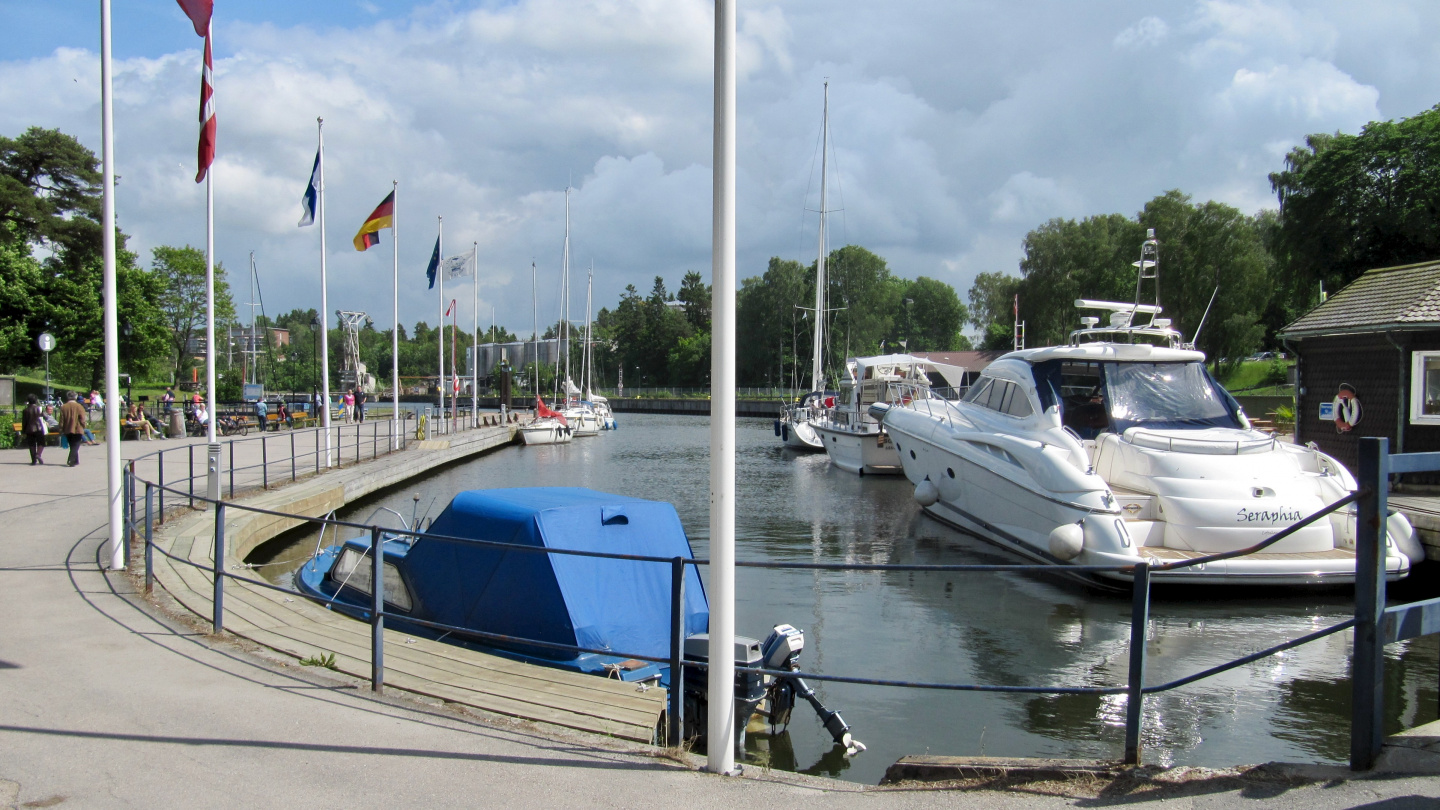
The first lock in Trollhättan was built already in 1794 – 1800. When these locks became too small a two parallel locks were built in the year 1844 so the steam ships can move both ways at the same time. Apparently in the 19th century locks were very busy and there were frequent traffic jams. At worst in the year of 1850 there was a queue of 120 ships to locks. For sure it took several meals before entering the lock.
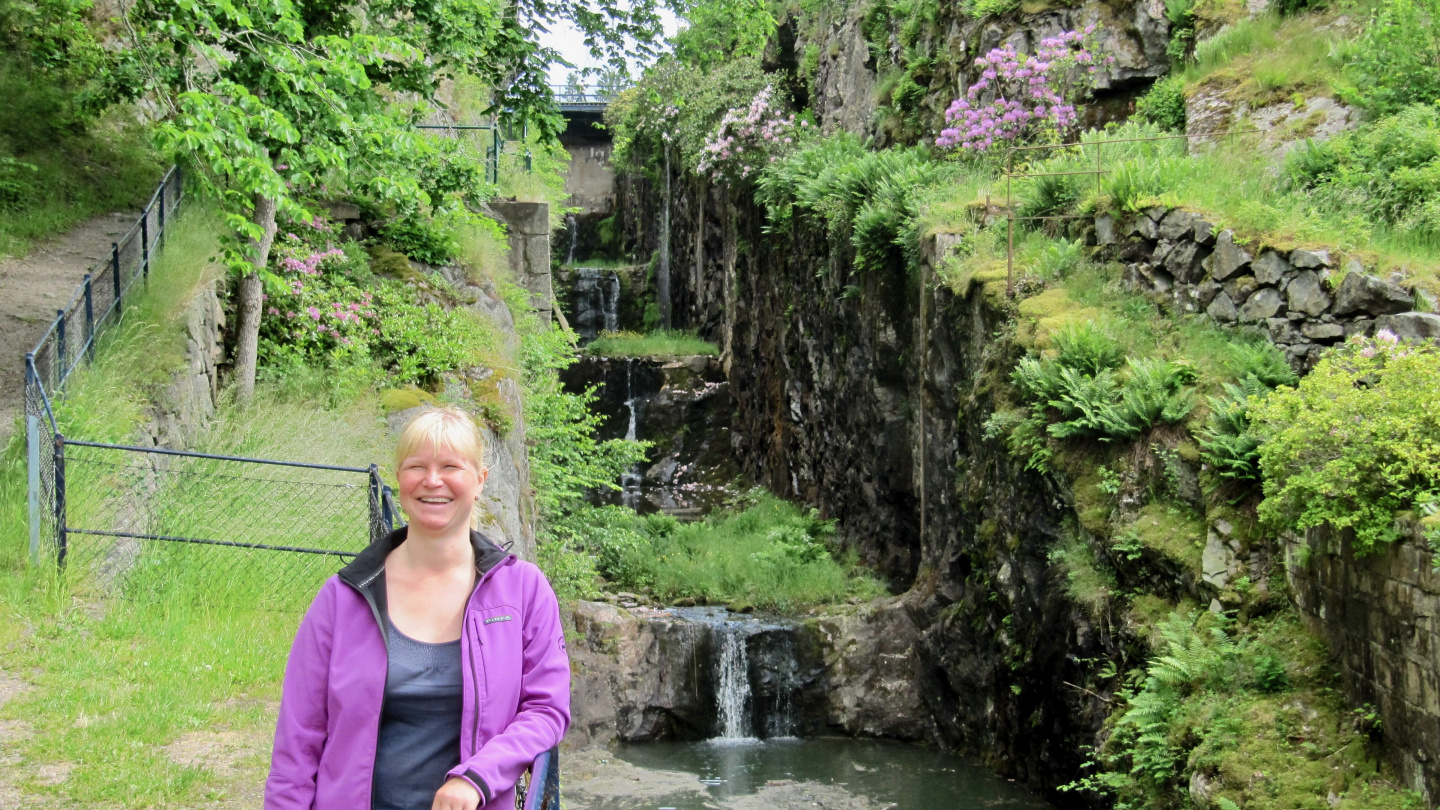
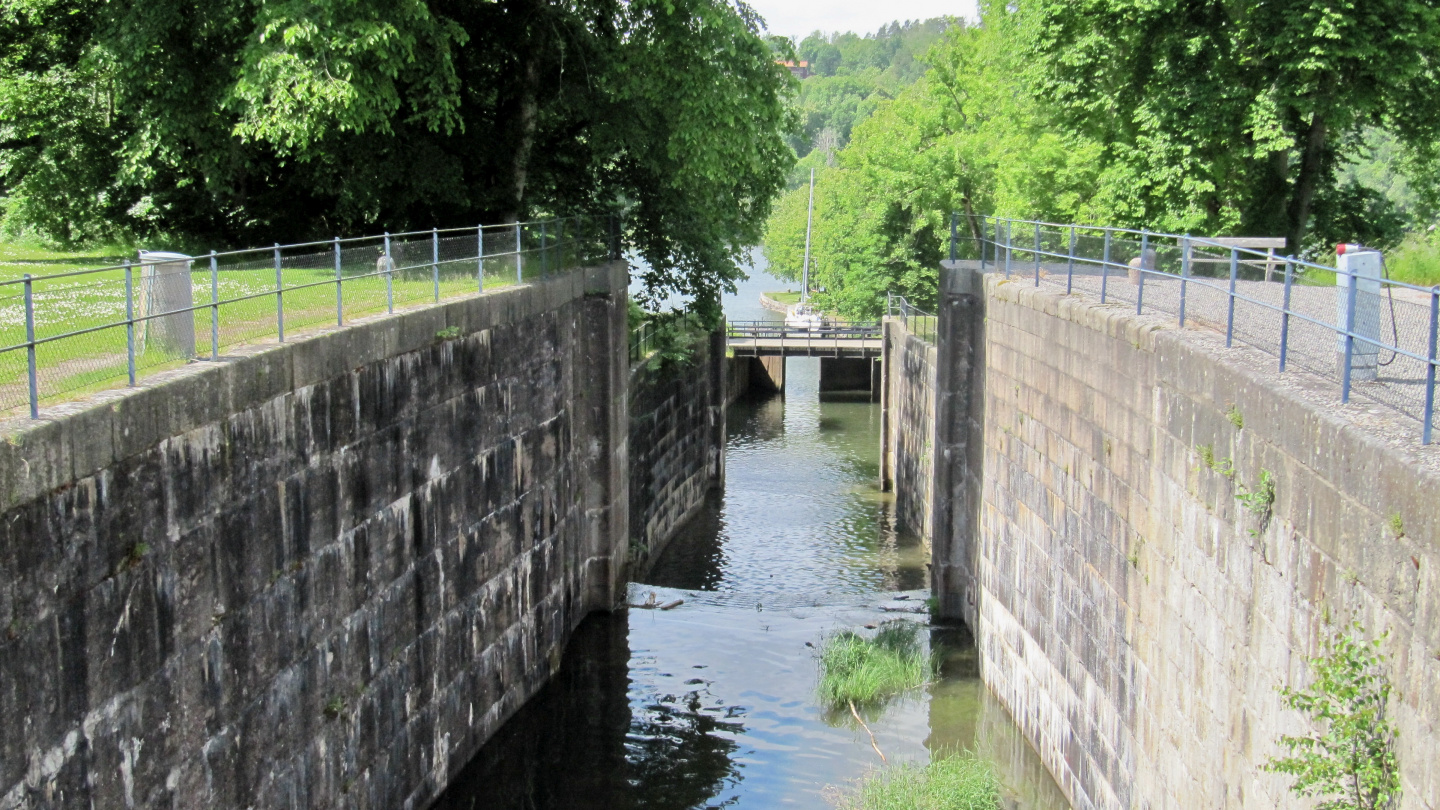
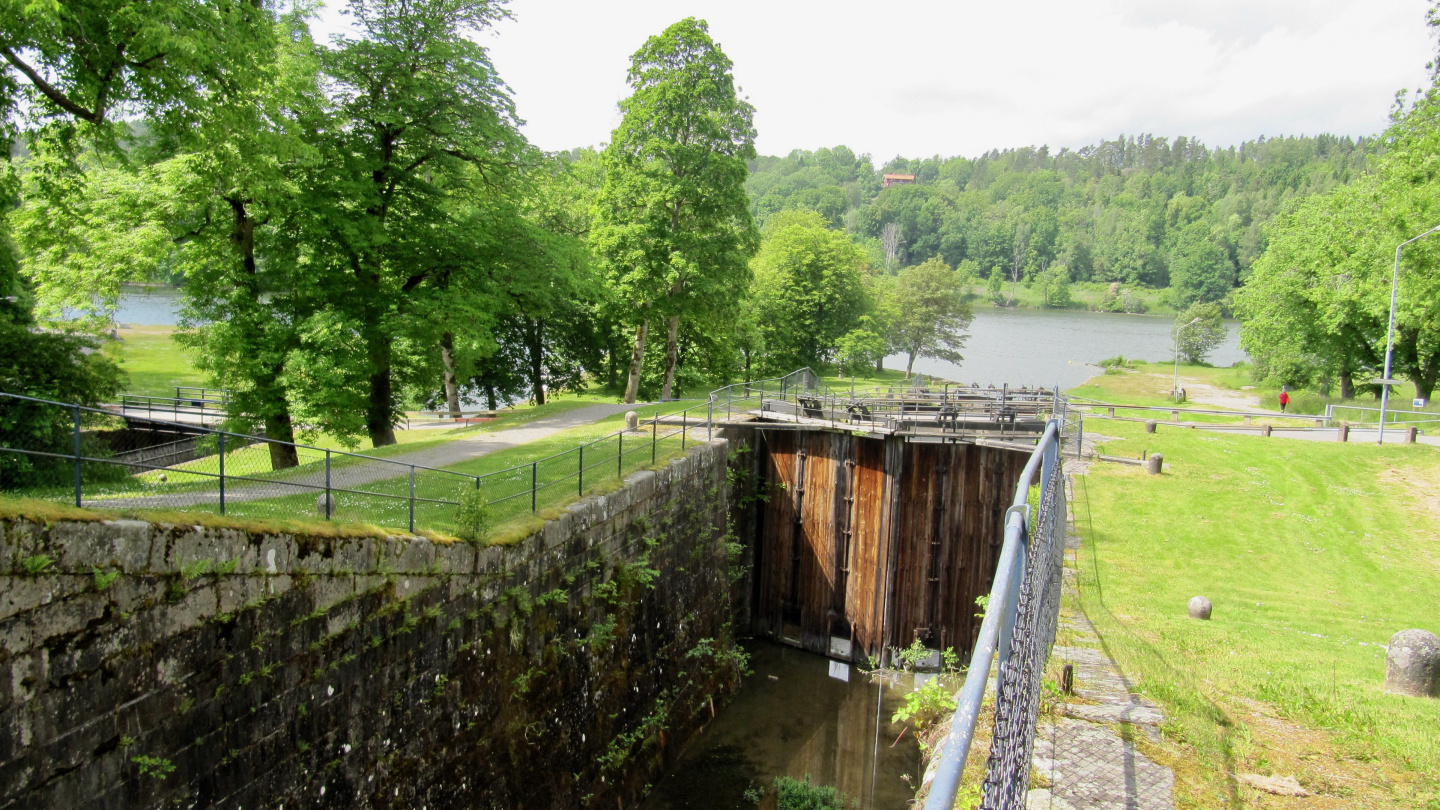
Let’s get back to the present time. Everything went exactly like in the Trollhätte canal guide except the canal fee is paid at the upper lock of the flight of the three locks in Trollhättan. The girl from the lock came out to collect the canal fee from the boats in the lock. This year they accepted only credit cards and Andrus had no other option than to put 860 real Swedish kronas back to the wallet and dig out Visa card while I held Suwena on the rope.
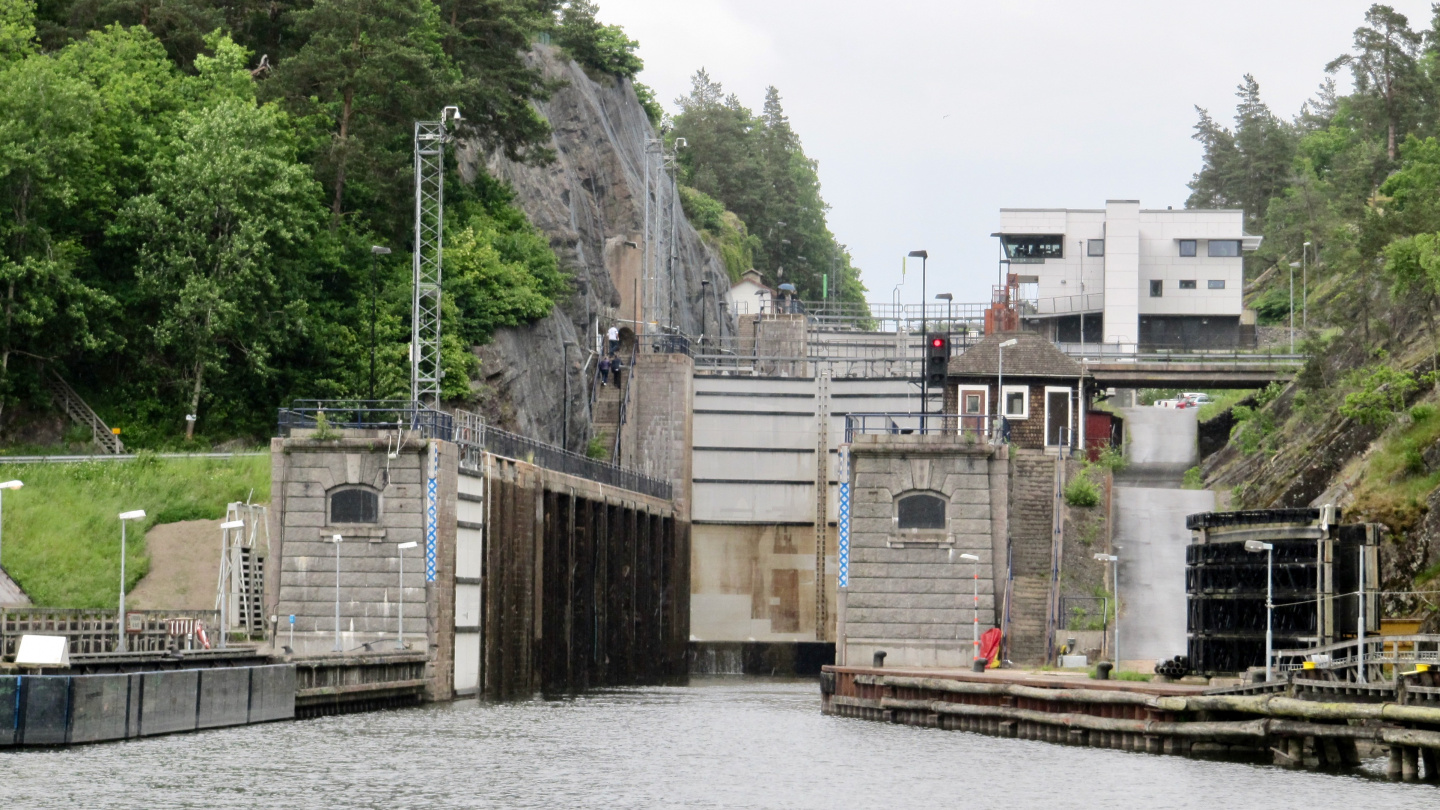
Just after leaving the last lock in Lilla Edet we waited with six other boats for a bridge opening. The bridge opened but the red light stayed on. Two local boats rushed through the bridge anyway not caring about the red light. Suddenly a big hassle started as behind the corner of a canal a cargo ship emerged from a opposite direction. All boats run backwards towards the lock’s waiting dock in order to get out the way of the 80 metres long ship.
The Trollhätte canal is 44 nautical miles long and after the sixth lock we had still 30 miles to go on the river towards Gothenburg. We had descended 44 metres down from lake Vänern. Behind us were the 58 locks of the Göta canal and six locks of the Trollhätte canal. Sailing in canals is totally different and full of work. Despite of this after passing the 64 locks it felt good to go towards the sea.
The Göta river gave us a good speed. In the upper part the current was 0.5 to 1 knots but closer to Gothenburg it really run with 1.5 knots speed. The river has a speed limit of 5 knots and our Perkins was running almost at idle with the current pushing us forward.
Just before Gothenburg is a Marieholm railway bridge and the Göta river bridge. The latter passes from east to west in Gothenburg’s centre and opening it always messes up the city traffic for a while. Even the guidebook recommends that the bridge should not be opened without a proper reason. There are three different underpassages. The sides are 17 to 18 metres tall and the highest middle with 18.3 metre clearance was reserved for ships. Our mast is 17.5 metres tall and in addition there are Windex and tricolor light. We asked by VHF from bridge keeper the water level of the Göta river. When they heard how tall we are we were directed to the middle under passage. Soon both the red and green light were lit and we crawled slowly forward with the mast almost scratching the bridge’s roof. Simultaneously a string of cars were rumbling above us.
In the end of the long day we entered the Lilla Bommens guest harbour in the centre of Gothenburg. The canal adventure was behind and a few days of city vacation ahead. To tie her up in Gothenburg was very great.
